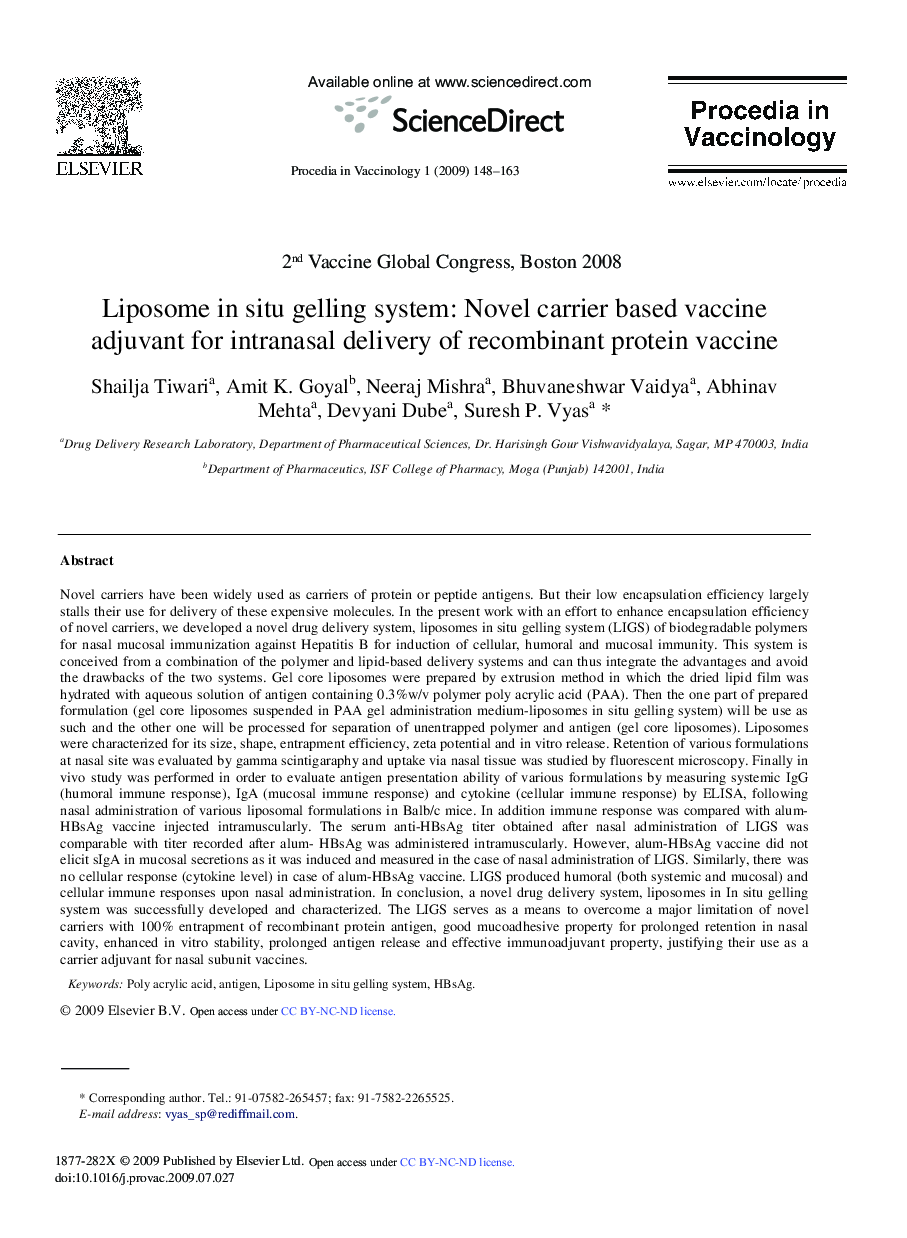| Article ID | Journal | Published Year | Pages | File Type |
|---|---|---|---|---|
| 2473873 | Procedia in Vaccinology | 2009 | 16 Pages |
Novel carriers have been widely used as carriers of protein or peptide antigens. But their low encapsulation efficiency largely stalls their use for delivery of these expensive molecules. In the present work with an effort to enhance encapsulation efficiency of novel carriers, we developed a novel drug delivery system, liposomes in situ gelling system (LIGS) of biodegradable polymers for nasal mucosal immunization against Hepatitis B for induction of cellular, humoral and mucosal immunity. This system is conceived from a combination of the polymer and lipid-based delivery systems and can thus integrate the advantages and avoid the drawbacks of the two systems. Gel core liposomes were prepared by extrusion method in which the dried lipid film was hydrated with aqueous solution of antigen containing 0.3%w/v polymer poly acrylic acid (PAA). Then the one part of prepared formulation (gel core liposomes suspended in PAA gel administration medium-liposomes in situ gelling system) will be use as such and the other one will be processed for separation of unentrapped polymer and antigen (gel core liposomes). Liposomes were characterized for its size, shape, entrapment efficiency, zeta potential and in vitro release. Retention of various formulations at nasal site was evaluated by gamma scintigaraphy and uptake via nasal tissue was studied by fluorescent microscopy. Finally in vivo study was performed in order to evaluate antigen presentation ability of various formulations by measuring systemic IgG (humoral immune response), IgA (mucosal immune response) and cytokine (cellular immune response) by ELISA, following nasal administration of various liposomal formulations in Balb/c mice. In addition immune response was compared with alum-HBsAg vaccine injected intramuscularly. The serum anti-HBsAg titer obtained after nasal administration of LIGS was comparable with titer recorded after alum- HBsAg was administered intramuscularly. However, alum-HBsAg vaccine did not elicit sIgA in mucosal secretions as it was induced and measured in the case of nasal administration of LIGS. Similarly, there was no cellular response (cytokine level) in case of alum-HBsAg vaccine. LIGS produced humoral (both systemic and mucosal) and cellular immune responses upon nasal administration. In conclusion, a novel drug delivery system, liposomes in In situ gelling system was successfully developed and characterized. The LIGS serves as a means to overcome a major limitation of novel carriers with 100% entrapment of recombinant protein antigen, good mucoadhesive property for prolonged retention in nasal cavity, enhanced in vitro stability, prolonged antigen release and effective immunoadjuvant property, justifying their use as a carrier adjuvant for nasal subunit vaccines.
